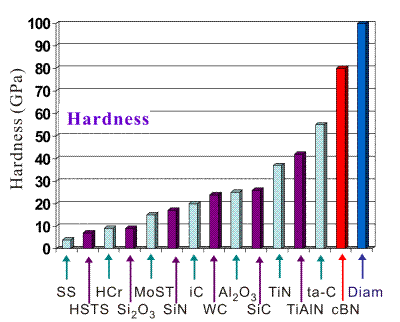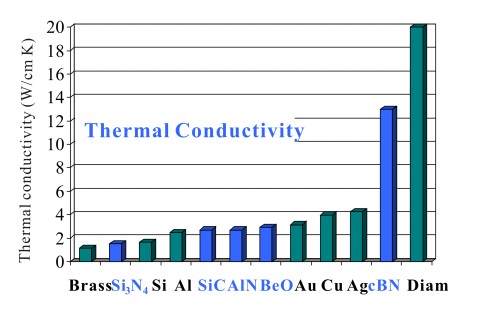Cubic BN has the second highest atomic density (1.68 × 1023 cm-3) and the second highest hardness (70 GPa) and the second highest thermal conductivity (13 W/cmK) just next to diamond. Because of the strong covalent bonds and induced ionicity, cBN even surpasses the most extreme material, diamond, in chemical and thermal stability. Cubic BN resists oxidation at ambient environment up to 1200 oC which is the value as twice higher as the oxidation temperature of diamond. The transformation temperature of sp3 to sp2 BN phase is 1550 oC whereas diamond transform to graphite at 1400 oC.


Unlike diamond, cBN is chemically inert when it contacts with molten ferrous materials. These extreme properties make cBN the best materials for machining ferrous materials such as tool steels. In addition, cBN has the widest band gap (6.2 ± 0.2 eV) of all III-V compound materials and can be doped for both p- and n-type conductivity. The electronic properties and the thermal stability hint the possibility of utilizing cBN in high speed, high power and high frequency electronic devices.
